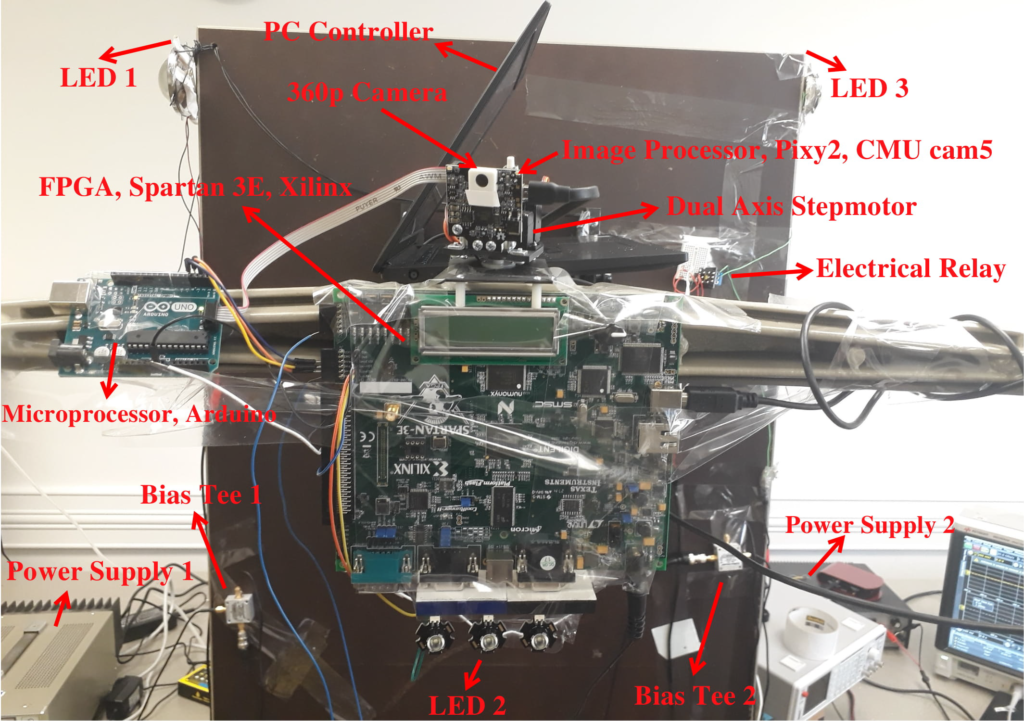Visual Light Communication (VLC), operating between 400-700 nm, shows great promise in the future of wireless communication. VLC technology can simultaneously utilize the emerging solid-state lighting technologies while acting as a complement to existing RF systems. VLC also has many advantages over existing RF technologies including higher bandwidth, higher potential for spatial reuse, and lower probability of intercept.
As it is still a new technology, a current challenge facing VLC is the ability to operate under mobility. Associate Professor Murat Yuksel and Ph.D. Candidate Pooya Nabavi at the University of Central Florida have developed a VLC tracking mechanism that provides both optical beam steering and 360-degree capturing algorithms for initial acquisition and real-time tracking and maintenance of the LOS link between two transceivers, either fixed or mobile.
Yuksel and Nabavi also designed and prototyped a 60 FPS vision-based tracking mechanism for indoor office communications. The range of the device was approximately 7 m and it was subjected to various performance and stability tests as the mechanism was moved and subjected to vibrations. The prototype of the device can be seen below in Figure 1. [1]

Figure 1: Prototype of vision-based tracking and acquisition of line-of-sight discovery and maintenance of VLC links
Related Links
IEEE Paper: Resource optimization in VLC for Internet of Things
IEEE Paper: Conformal VLC Receivers with Photodetector Arrays
